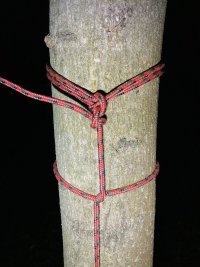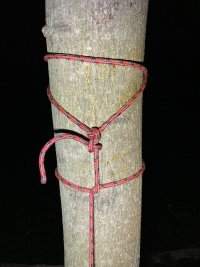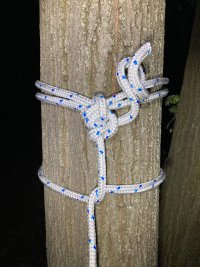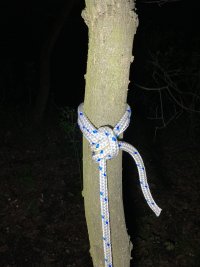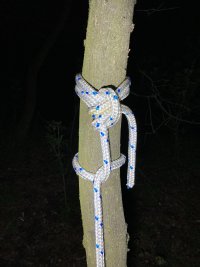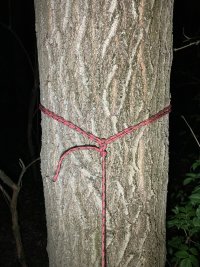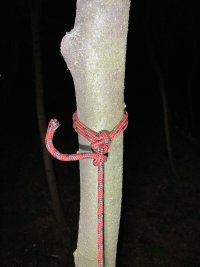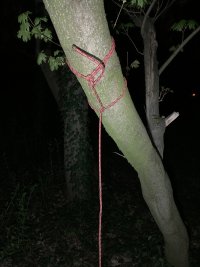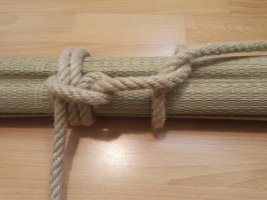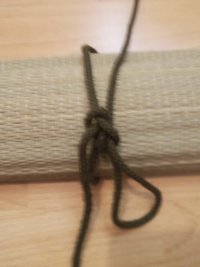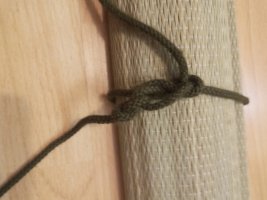S
Suizident
Member
- Aug 7, 2025
- 35
Hello,
In one setup, only spruce trees are available as anchor points. Since
their branches are too weak, the rope should be attached to the trunk.
The recommendation was to attach the rope to the trunk of the
spruce tree using the Siberian Hitch. Then use a normal noose knot as a loop.
I couldn't find anything about the Siberian Hitch in the forum; apparently,
this setup hasn't been discussed here yet?
On the web, the Siberian Hitch is often recommended for "hanging" a
hammock, but it is inevitably suitable for heavy loads.
In this case, the special feature is that the force exerted
on the knot is such that it could theoretically slide down the trunk
even if the knot does not come undone. At least in theory, this could
be prevented by the Siberian Hitch tightening more and more
under load.
Can anyone comment on this? On the internet, the following are said
to be more resilient to the Siberian Hitch are the Taut-Line Hitch, the
Truckers Hitch, and the Highwayman's Hitch. However, these knots seem
to be intended more for tensioning a load than for hanging a load.
Hopefully, advanced users or knot and tree
experts will find this thread! :D
Many thanks and best regards,
Suizident
In one setup, only spruce trees are available as anchor points. Since
their branches are too weak, the rope should be attached to the trunk.
The recommendation was to attach the rope to the trunk of the
spruce tree using the Siberian Hitch. Then use a normal noose knot as a loop.
I couldn't find anything about the Siberian Hitch in the forum; apparently,
this setup hasn't been discussed here yet?
On the web, the Siberian Hitch is often recommended for "hanging" a
hammock, but it is inevitably suitable for heavy loads.
In this case, the special feature is that the force exerted
on the knot is such that it could theoretically slide down the trunk
even if the knot does not come undone. At least in theory, this could
be prevented by the Siberian Hitch tightening more and more
under load.
Can anyone comment on this? On the internet, the following are said
to be more resilient to the Siberian Hitch are the Taut-Line Hitch, the
Truckers Hitch, and the Highwayman's Hitch. However, these knots seem
to be intended more for tensioning a load than for hanging a load.
Hopefully, advanced users or knot and tree
experts will find this thread! :D
Many thanks and best regards,
Suizident

